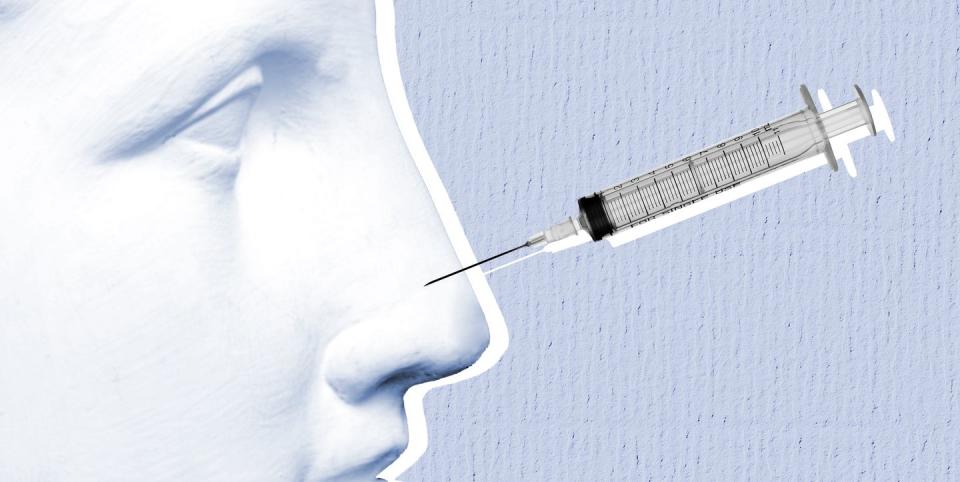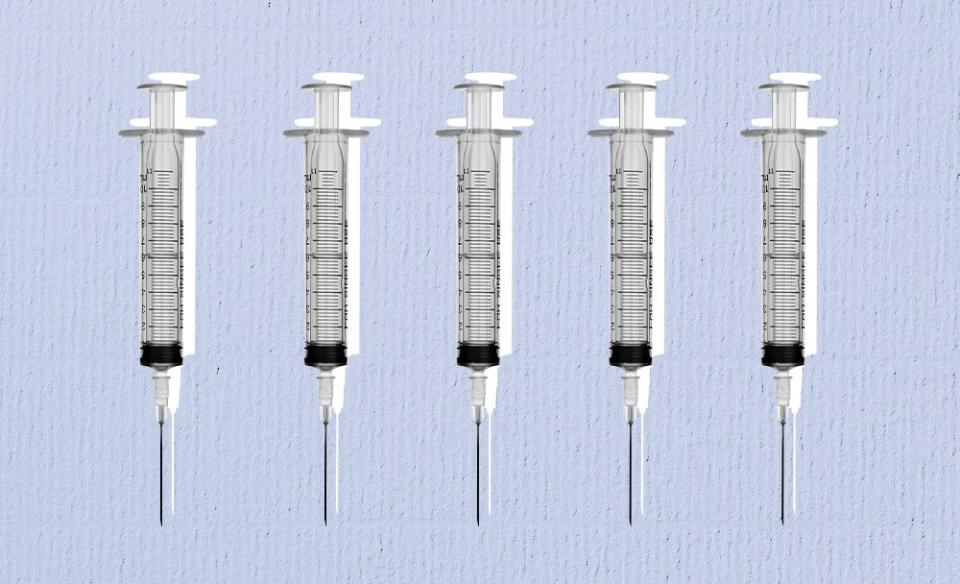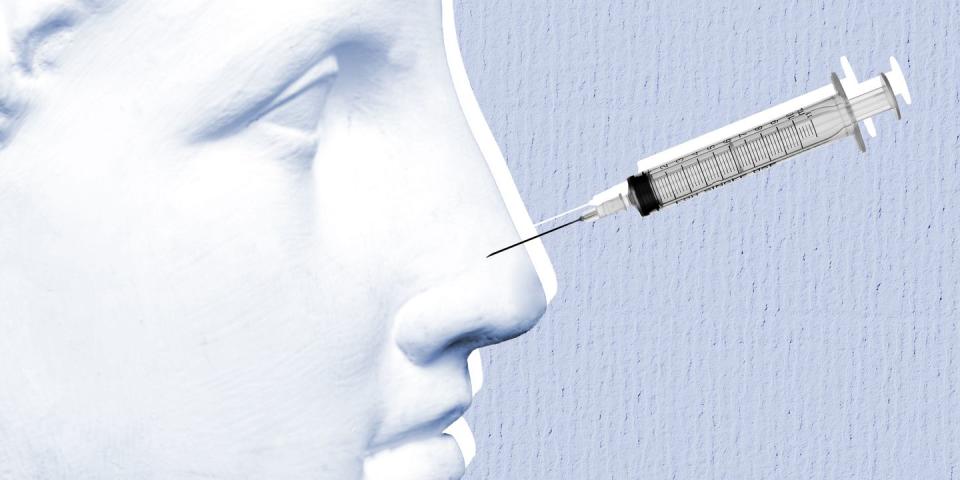Non-Surgical Nose Jobs Exist — Here's What You Need to Know

You may have thought that when it comes to a nose that you don't like there are only two options: learning to love it as is or opting to get a surgical rhinoplasty. But it turns out, there is another way to address perceived imperfections in your nose without going under the knife: non-surgical nose jobs.
While a non-surgical nose job may sound like an oxymoron, the procedure is really further evidence that the injectable filler is a miracle of modern aesthetic medicine. That's right, you can get a liquid nose job and bypass invasive surgery, provided that your nose has the right characteristics for the quick procedure.
For more details on what a non-surgical nose job really entails we sat down with New York City's Dr. Dara Liotta, a double board certified facial plastic surgeon.

What is a liquid rhinoplasty and how does it differ from a traditional nose job?
Traditionally, a rhinoplasty is a surgery that changes the shape of the nose. It requires anesthesia and considerable healing time because of bruising and swelling, but the results are permanent. On the other hand, according to Dr. Liotta, a liquid nose job (or non-surgical rhinoplasty) uses small needles to inject filler and/or Botox to change the shape of the nose without any invasive surgery. As a result, the effects are temporary.
How does the process of injecting filler into the nose work to fix imperfections? What kind of filler is used?
Prior to the injections, ice is used to numb the skin and then the skin is injected with the filler or Botox, depending on what the practitioner decides. "The filler is used to camouflage issues such as a crooked nose, or a bump on the nose, or to give the illusion that the nose is straighter and more refined," explains Dr. Liotta. She also warns that not all nose concerns are amenable to a non-surgical rhinoplasty.
If you are a good candidate, the bonus is that you get to skip the pain and recovery of surgery: "For most patients there is essentially no downtime."
Another great bonus: the filler is reversible, so in the event that you don't like the results, the filler can be dissolved by your practitioner, reversing the procedure. In fact, this is why Dr. Liotta only uses hyaluronic acid fillers. "Should there be any issues, I just dissolve with injections of hyaluronidase."
What kind of qualities of the nose can a liquid nose job address?
"In the right candidate, a liquid rhinoplasty can even out irregularities along the bridge of the nose to help it appear straighter, raise the nasal bridge, or camouflage a dorsal hump on the profile view," she explains. Some other condition that the procedure addresses includes fixing irregularities after a rhinoplasty as opposed to getting a revision surgery.
"Although you are technically adding volume with filler, the end result is often a nose that appears smaller and more refined - essentially it is more balanced. Think of it like semi-permanent contouring makeup on your nose," says Dr. Liotta.
What can a liquid rhinoplasty not address?
Injections cannot narrow the nasal tip or bring the nostrils in to slim the width of the nose at its base. Additionally, injections cannot bring the top of the nose closer to the face (which is called decreasing the nasal projection in medical speak).

Are there any risks to the procedure?
"While there are risks, I would definitely not characterize this procedure as 'risky.' In fact I would say it's safe with extremely rare risks," explains Dr. Liotta, who elaborates that when people talk about the risks of this particular treatment, they are typically referring to an exceedingly rare complication called vascular compromise, which means the filler has caused the blood flow through an important artery to stop. This can happen by either directly injecting filler into the artery and causing a blockage or by injecting the filler such that it pushes from the outside on an artery, pinching it off and stopping the flow of blood.
"It’s really flow through the important “end arteries” that we are concerned with, not veins" she says, continuing, "Most of the blood supply to the face (and really all of the body) is redundant - meaning that there are multiple arteries, connected, almost like a netting, that deliver blood. An end-artery- means that there’s one artery only in that area that delivers blood supply. Blocking these arteries is a problem."
The end-arteries that are around the nose include arteries that supply the retina (blocking this would be bad as the complication could cause blindness) and those that supply certain areas of skin around the nasal tip and nostril (blocking these would cause necrosis, or death of the skin in these small areas). However, these complications are extremely remote according to Dr. Liotta, as is vascular compromise. "To cause real long-lasting damage, early signs of complications would have to be ignored by both the patient and injector." Whew.
It's also important to note that these risks are the same risks one might encounter with tear trough filler, filler in the forehead or nasalabial folds, and filler in the lips.
What should you look for in a provider for a non-surgical nose job?
Baseline: your doctor should absolutely know what vascular compromise is and what the early signs of that looks like. They should also stock hyaluronidase (the enzyme that dissolves filler) in their office and know how to use it. Likewise, they should have a medical license and the ability to prescribe any medications that may become necessary.
"Most conservatively, they should have admitting privileges to a hospital in a worst-case scenario," Dr. Liotta says.
Where is it safest to inject along the nose?
The bridge of the nose is considered safer to inject than the tip of the nose, or the nostril, but with proper precautions and expertise, risk of serious complication is remote.

How much does a liquid nose job typically cost?
"I’m sure that this varies, but in my office, it varies between about $1000 and $1,500 depending on the type and amount of filler used" says Dr. Liotta.
How long do the effects of a non-surgical nose job last for?
Results can last between 9 months and 2 years depending on the anatomy of the nose, the issue being addressed, and the type of filler used.
Is there downtime?
Very rarely some patients develop a small bruise around the injection site which lasts around 3-4 days, but generally there is no downtime at all.
('You Might Also Like',)

